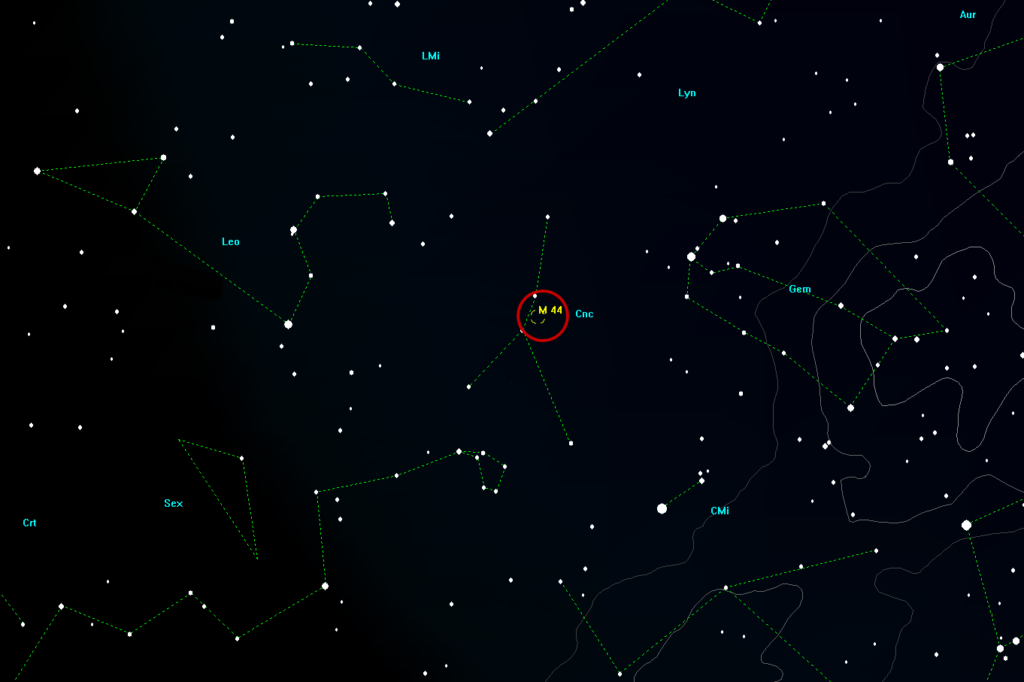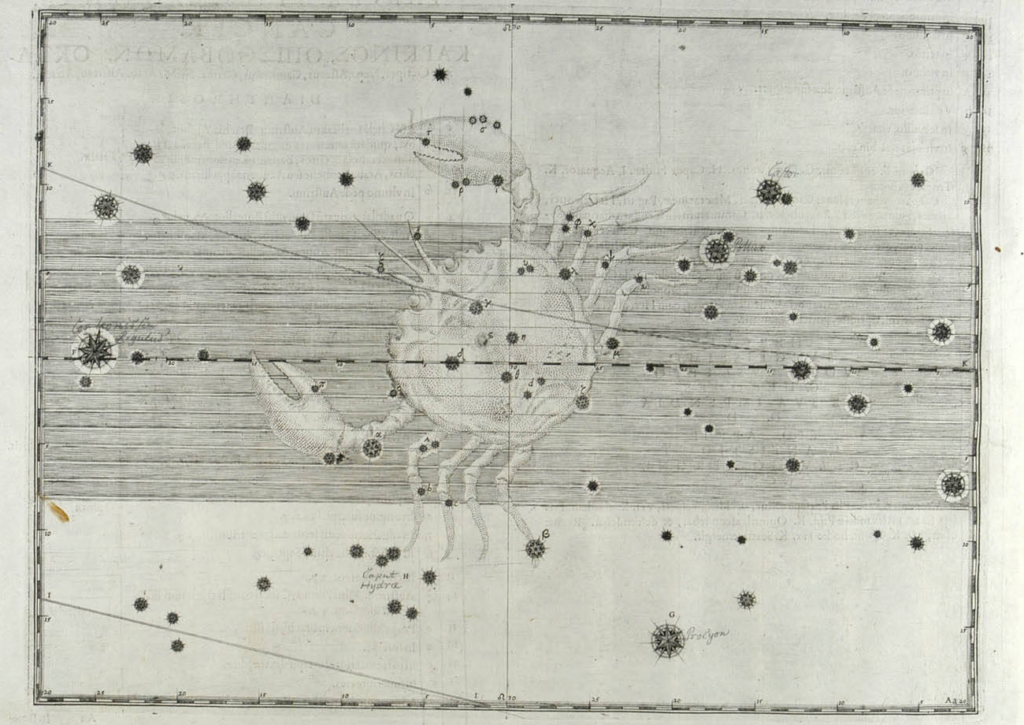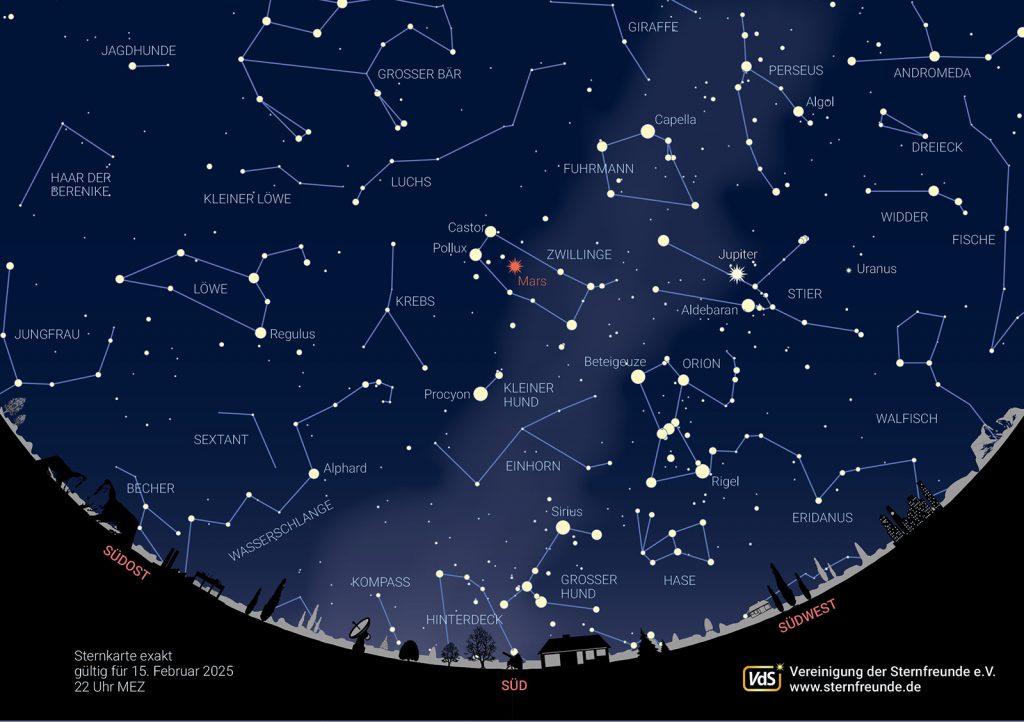The starry sky in February 2025
As already reported several times in the press and here mentioned above, we can expect another planetary constellation in the evening sky towards the end of the month, around February 28. This will involve the planets Mercury, Venus, Mars, Jupiter and Saturn, which are visible to the naked eye, as well as Uranus and Neptune, which are only visible with telescopes/binoculars.
However, this constellation requires a differentiated view: Mercury and Saturn are close to the horizon and are only visible under optimal conditions. Under average weather conditions, Mars, Jupiter and Venus in particular remain easy to observe. Below is a representation of the sky view on February 28 at 18:30.

Sun and moon
The days are getting considerably longer again. On the first day of the month, the sun is 9 hours 33 minutes above the horizon in Zweibrücken, on the last day it is already 11 hours 3 minutes
Right at the beginning of the month, on February 1, you can see the narrow, waxing crescent moon below Venus.
The full moon will affect the observation of fainter objects around the days of February 12.

Planets
Mercury can already be seen on the western horizon towards the end of the month under good conditions. Visibility will improve further at the beginning of March.
Reached mid-February Venus Its crescent shape is clearly visible in the telescope.
The red planet Mars has just passed its opposition position and is still prominent in the evening sky. In the telescope, its apparent diameter will decrease to a good 10 arc seconds by the end of the month.
Jupiter can be found in the southwest in the first half of the night; it has completed its opposition period. You can still enjoy the play of its four large moons in smaller telescopes within a few hours.
Saturn is approaching the horizon, towards the end of the month it will be difficult to spot it in the evening sky. It will not appear in the morning sky again until the end of May.
Uranus and Neptune are no longer interesting objects to observe. Neptune leaves the celestial stage towards the end of the month.
Starry sky
The twinkling stars of the winter sky have already moved in the direction of the sunset. West shifted, but are still prominent in the night sky.
High about us are Gemini and the inconspicuous constellation of Cancer with its open star cluster, the Praesepe (Latin for The Crib). Far away from disturbing lights, this can already be recognized as a faint patch of nebulosity. Its true beauty can be glimpsed with the aid of binoculars. In Greek mythology, the crab plays a minor role. According to one version, it is said to have assisted the many-headed Hydra in her confrontation with Hercules. However, both were ultimately defeated by the ancient hero. The crab was then transferred to heaven by Hera, wife of Zeus, who was not on good terms with Hercules.


Source: Wikipedia
In the East the spring constellations are already attracting attention. Leo, with its main star Regulus, has already risen completely above the horizon.
Still deep in the South the bright star Sirius can still be seen in the Great Dog. Due to its low horizon height, a twinkling with color changes and dancing can often be observed, which is caused by refraction of the light on the flatter and therefore longer path through the Earth's atmosphere.
The following graphic shows the view of the sky on February 15 at 10 pm.

